
Form automation involves using specialized software or tools to automate the creation, completion, and submission of forms. Forms are an essential part of many business processes, from customer onboarding to employee performance reviews. With form automation, businesses can save time, reduce errors, and improve efficiency by automating the data entry process. This is achieved by extracting data from various sources, such as existing databases or spreadsheets, and using it to populate fields in PDFs or online forms, eliminating the need for manual data entry.
In this article, we'll explore the role of OCR and form automation workflow, including data extraction and population techniques. You'll discover the key benefits of automating your form processes, from increased productivity to improved data quality. We will explore the applications of form automation in various industries.
By the end of this post, you'll have a comprehensive understanding of how form automation can revolutionize your business operations. Let's delve deeper into form automation and uncover the practical ways you can take to implement it in your organization.

What is OCR?
OCR (Optical Character Recognition) technology is a computerized process of converting printed or handwritten text into machine-encoded text, which can be read and processed by a computer. OCR is widely used in various industries, including finance, healthcare, legal, government, and education, for various tasks such as document processing, data entry, and record-keeping. We can recognize a wide range of fonts, styles, and languages, making it a versatile tool for converting physical documents into digital format.
OCR technology has revolutionized the way businesses process forms. Form processing involves the collection, extraction, and analysis of data from various types of forms, such as invoices, receipts, and surveys. Manual processing of forms is time-consuming and error-prone, which is why businesses are increasingly turning to OCR technology for a more efficient and accurate process.
Manual Form Processing Drawbacks
| Drawback | Description |
|---|---|
| Time-consuming | Manual form processing is slow and tedious, especially when dealing with large volumes of forms. |
| Error-prone | Human errors are common in manual data entry, leading to inaccurate or inconsistent data. |
| Inconsistent | Different operators may enter data in different formats or styles, causing inconsistencies. |
| Costly | Manual data entry requires significant human resources, which can be expensive. |
| Limited scalability | Manual processing is not scalable and may not keep up with increasing form volumes. |
| Security risks | Physical forms can be lost, stolen, or damaged, compromising sensitive information. |
| Lack of integration | Manual data entry can be difficult to integrate with other systems and databases. |
OCR technology can help businesses overcome the challenges of manual form processing by reducing time, cost, and errors, providing consistent and accurate data, and improving scalability and data security.

Form Automation Workflow
Let us look at each step of the form automation workflow one by one -
1. Form Creation
The first step is to create a form that can be used to collect information from users. This can include things like contact forms, surveys, order forms, and more.
- JotForm - a popular online form builder that offers a drag-and-drop interface and over 10,000 form templates.
- Typeform - a form builder that is known for its user-friendly and engaging form designs.
2. Data Collection
Once a form has been created, it needs to be shared with users so they can fill it out and provide the necessary information.
- Google Forms - a free tool that allows users to create and share custom forms and surveys.
- Wufoo - an online form builder that provides customizable forms and templates for collecting data.
3. Data Extraction
After data has been collected, it needs to be extracted from the form and saved in a usable format for further processing. Note that a lot of forms are hard copies, and they need to be processed using OCR and deep learning to extract structured data.

- Nanonets - a data extraction tool that allows users to extract data from PDFs, emails, and other documents using automated workflows.
- ParseHub - a data extraction tool that allows users to scrape data from websites and forms and save it in various formats.
5. Data Validation and Verification
After data has been collected, it needs to be validated and verified to ensure that it is accurate and complete.
- Nanonets - a data extraction tool that has features to configure manual or automated approval processes and set up validation rules based on conditions.
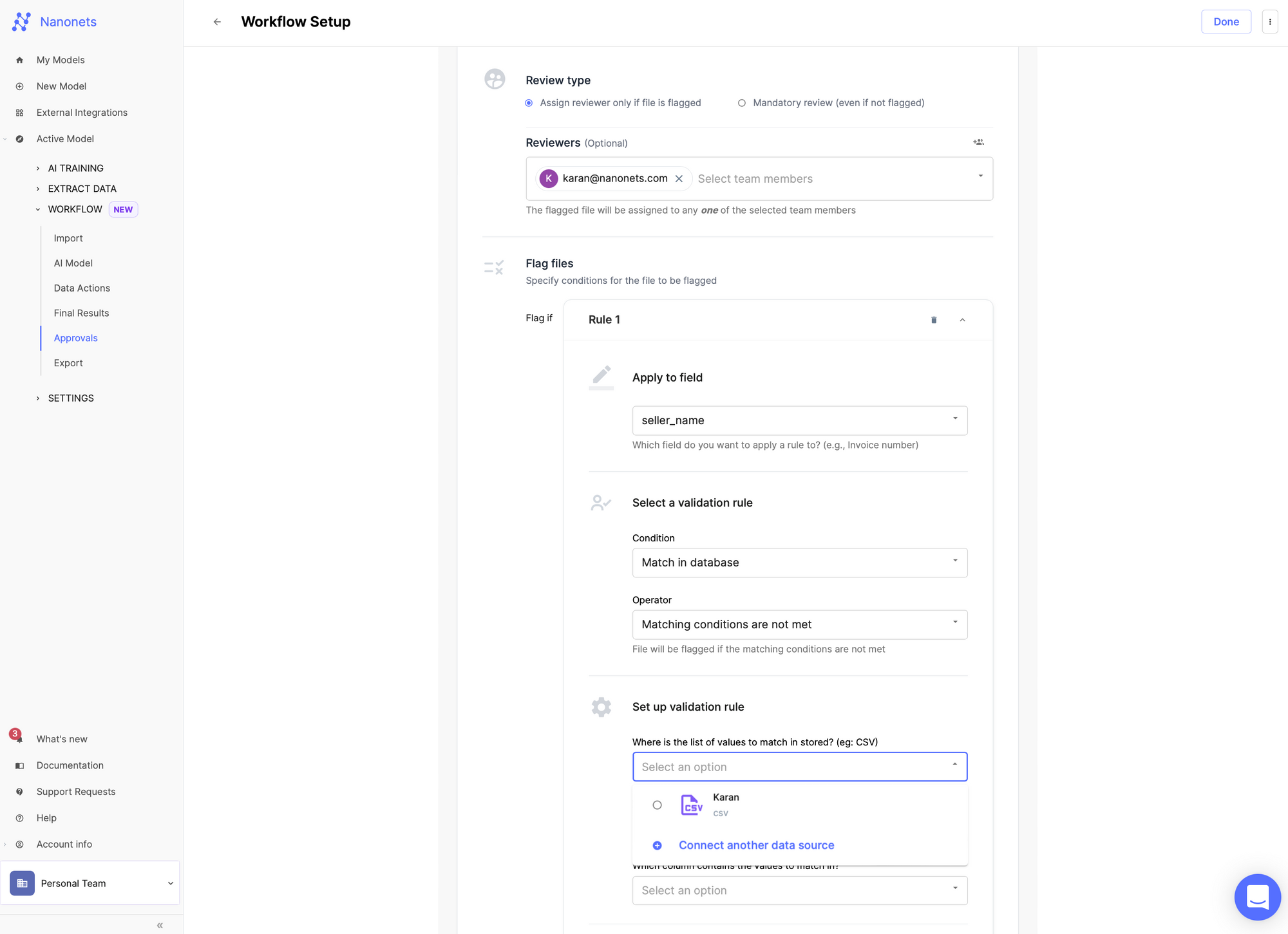
- Zapier - a tool that automates workflows and integrates different apps to help with data validation and verification.
- Formstack - a data collection tool that provides features such as data validation, conditional logic, and electronic signatures.
6. Data Integration
Once data has been collected and validated, it may need to be integrated with other systems or apps for further processing or analysis.
- Nanonets - a data extraction and workflow automation solution which provides functionality to export data to ERPs / software / database of choice.
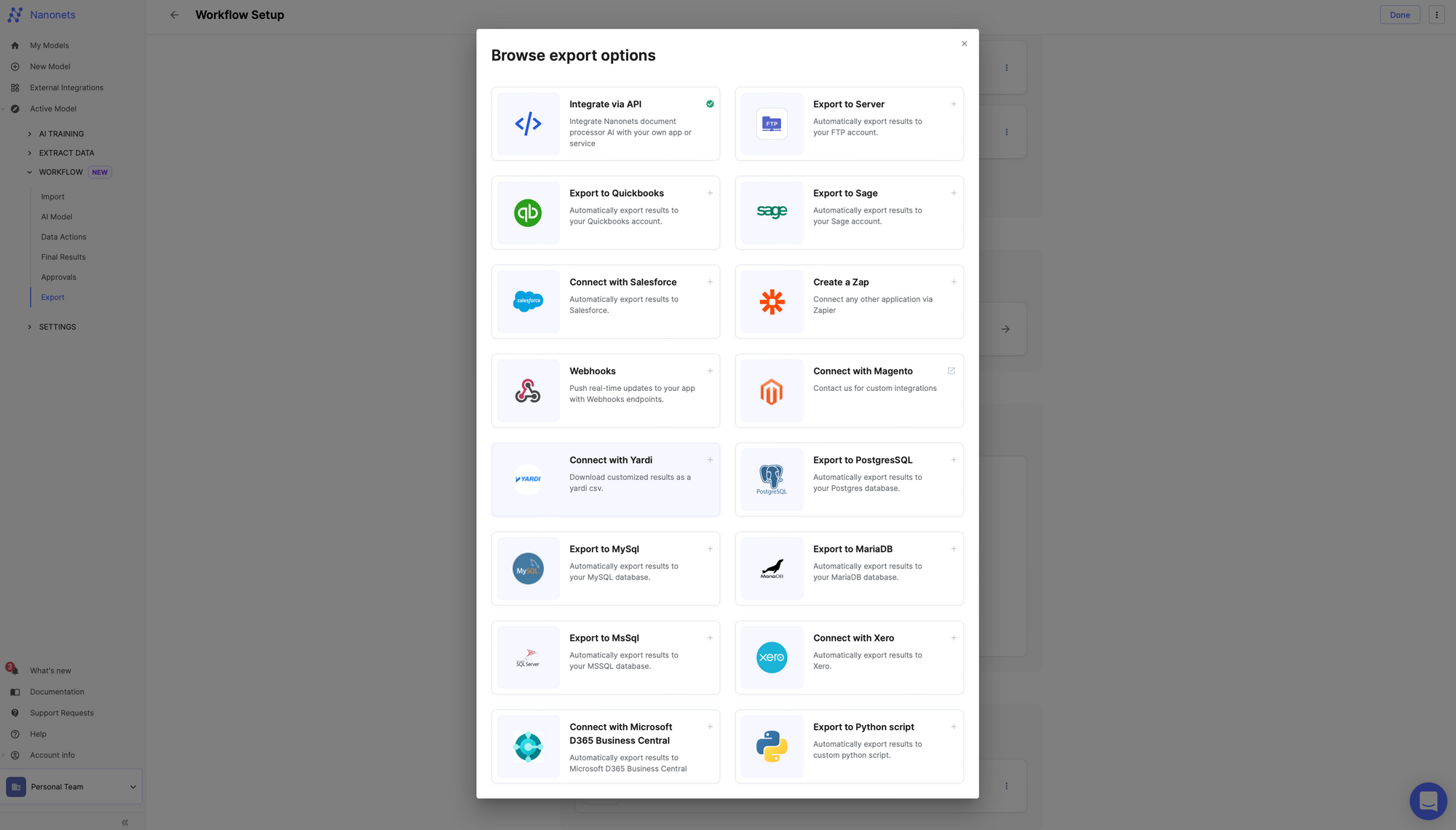
- Microsoft Power Automate - a cloud-based service that allows users to create automated workflows that integrate with various apps and services.
- Integromat - a tool that connects different apps and automates workflows, allowing for data integration and processing.
7. Data Storage and Management
After data has been collected and integrated, it needs to be stored and managed in a secure and organized manner.
- Google Sheets - a cloud-based spreadsheet tool that can be used for storing and managing data.
- Airtable - a database management tool that provides features such as customizable fields, automated workflows, real-time collaboration, and app integrations.
8. Data Analysis and Reporting
Once data has been stored and managed, it can be analyzed and reported on to gain insights and make informed decisions.
- Tableau - a business intelligence and data visualization tool that helps users analyze and report on data in a visual and interactive manner.
- Microsoft Excel - a widely used spreadsheet tool that provides powerful data analysis and reporting features.
9. Workflow Automation
Finally, workflows can be automated to help streamline processes and save time.
- Nanonets - workflow automation for form automation with multiple import, form processing, form data extraction, approval process setup, validation rules, and export options.

- Kissflow - a workflow automation tool that allows users to create custom workflows and integrate with different apps and services.
- Nintex - a workflow automation tool that provides features such as drag-and-drop workflow design, integrations with popular apps, and analytics.

Forms Processing Workflow with OCR
Let us take a look at how OCR and other synergistic software can help automate multiple steps of the forms processing workflow -
- Form capture: The first step is to capture the form in digital format. This can be done using a scanner or a digital camera. OCR can be used to automatically recognize the text on the form and convert it into a digital format that can be easily processed by a computer.
- Image pre-processing: The captured image may require pre-processing to improve the quality of the image and make it more readable for OCR. This can include image enhancement techniques such as contrast adjustment, noise reduction, and image straightening.
- OCR recognition: The captured image is analyzed by OCR software to extract text from the form. OCR technology can recognize printed and handwritten text, and it can also identify checkboxes, radio buttons, and other form elements.
- Data extraction: After the text has been extracted, the relevant data needs to be extracted and formatted into a structured format such as XML or CSV. OCR technology can be used to extract specific data fields such as names, addresses, and dates.
- Data validation: The extracted data needs to be validated to ensure accuracy and completeness. OCR technology can be used to check for errors such as misspellings, incorrect dates, and missing fields.
- Data integration: The extracted data needs to be integrated with other systems or databases. OCR technology can be used to automatically import the data into other software systems, reducing the need for manual data entry.
- Reporting: The extracted data can be used to generate reports and analytics. OCR technology can be used to generate reports based on specific data fields or criteria.

Form Automation Across Industries
Automated forms processing using OCR software has use cases across multiple industries. This is possible due to the OCR forms processing software employing deep learning to perform data extraction rather than a rule based templatized approach.
Note that Nanonets OCR has helped automate forms processing using OCR for clients spanning a wide range of industries.
- Healthcare Industry: In the healthcare industry, OCR software can automate the processing of various forms such as medical claims, prescriptions, and patient information forms. Nanonets OCR can extract fields such as patient name, date of birth, insurance details, medication details, and doctor's notes.

- Finance Industry: In the finance industry, OCR software can automate the processing of forms such as invoices, purchase orders, receipts, and tax documents. Nanonets OCR can extract fields such as vendor name, invoice number, date, total amount, and line item details.
- Legal Industry: In the legal industry, OCR software can automate the processing of various forms such as legal contracts, court filings, and case files. Nanonets OCR can extract fields such as party names, dates, case numbers, and legal citations.

- Education Industry: In the education industry, OCR software can automate the processing of forms such as admission forms, grade sheets, and attendance records. Nanonets OCR can extract fields such as student name, roll number, subject grades, attendance percentage, and academic year.
- Government Agencies: Government agencies use OCR software to process various forms such as tax returns, immigration forms, and passport applications. Nanonets OCR can extract fields such as applicant name, passport number, visa type, and travel dates.

- Human Resources: In the Human Resources industry, OCR software can automate the processing of forms such as job applications, resumes, and employee information forms. Nanonets OCR can extract fields such as candidate name, email address, contact number, education details, and employment history.

- Retail Industry: In the retail industry, OCR software can automate the processing of forms such as order forms, shipping labels, and invoices. Nanonets OCR can extract fields such as customer name, shipping address, product name, quantity, and price.

- Real Estate Industry: In the real estate industry, OCR software can automate the processing of forms such as rental agreements, property deeds, and mortgage documents. Nanonets OCR can extract fields such as property address, owner name, mortgage amount, and payment due date.
- Insurance Industry: In the insurance industry, OCR software can automate the processing of forms such as claim forms, policy documents, and insurance applications. Nanonets OCR can extract fields such as policy number, claim amount, accident date, and policyholder information.

- Manufacturing Industry: In the manufacturing industry, OCR software can automate the processing of forms such as purchase orders, bills of lading, and work orders. Nanonets OCR can extract fields such as product name, part number, quantity, and delivery date.

Nanonets OCR can extract various fields from different types of forms in the industries mentioned above, providing automation, efficiency and accuracy to the processing of data.

Try Nanonets for Form Automation
You can sign up and get started with Nanonets within minutes and set up your automated forms processing workflow personalized based on your use case and needs. The steps are listed below.
Alternatively, you can schedule a call with one of our AI experts who can understand the use case, demo the product and set up a personalized forms processing workflow for you.
Get started with Nanonets now -
- Sign up and create your free account on app.nanonets.com/#/signup.

- Create your own model.
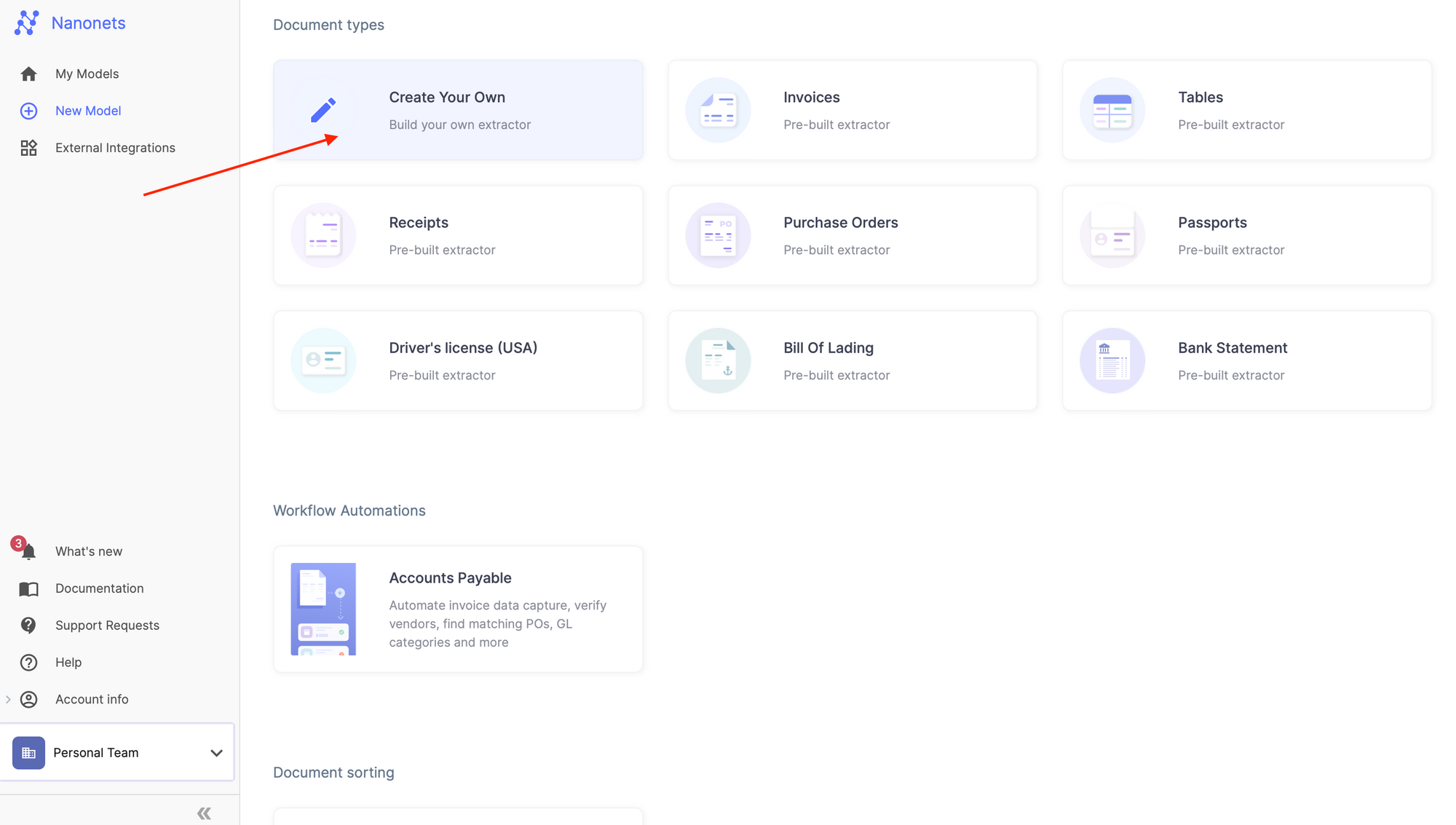
- Set up import options.
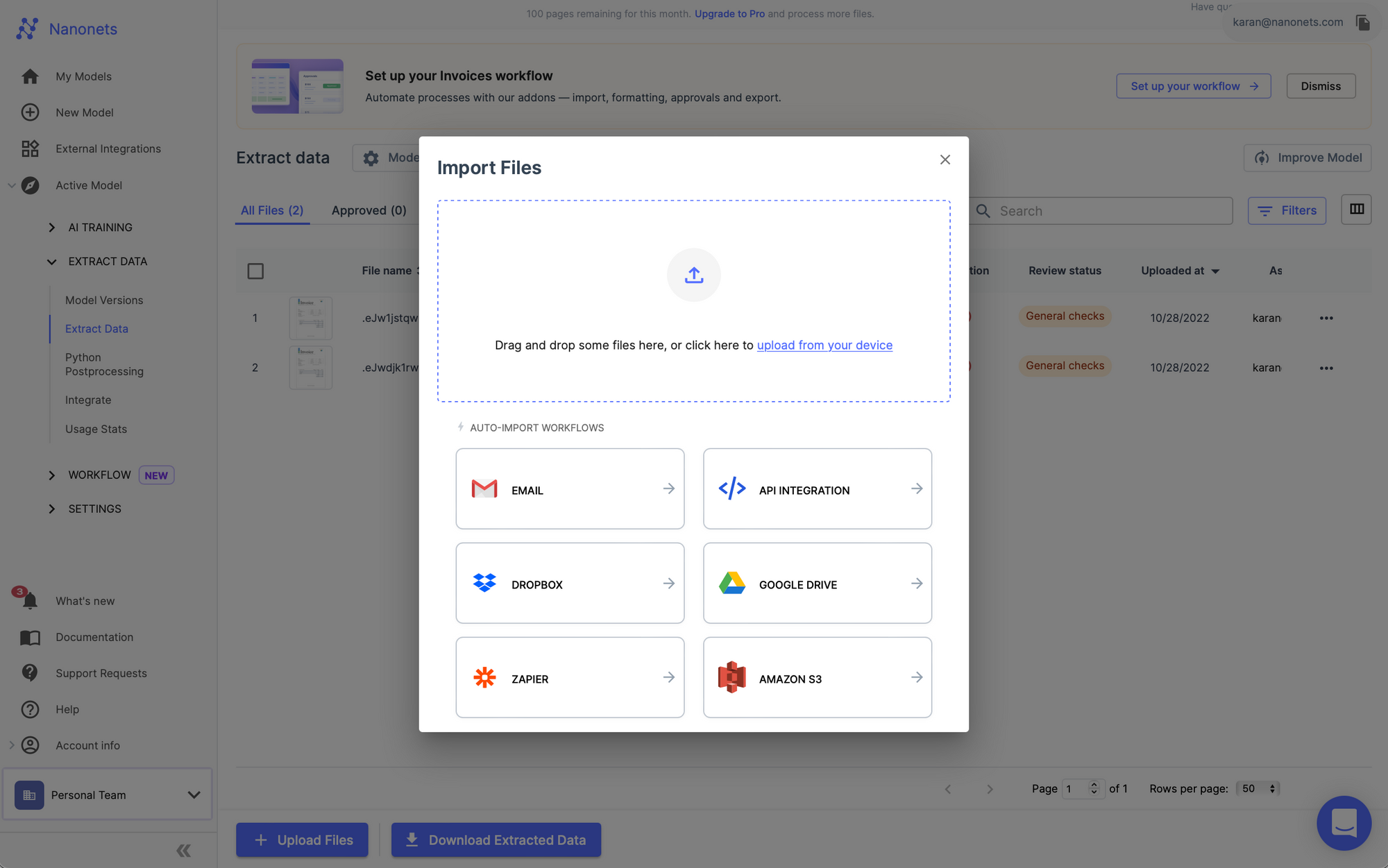
You can manually upload files to test or set up automated imports from ERPs / software / database of choice.
- Nanonets OCR processes the files.
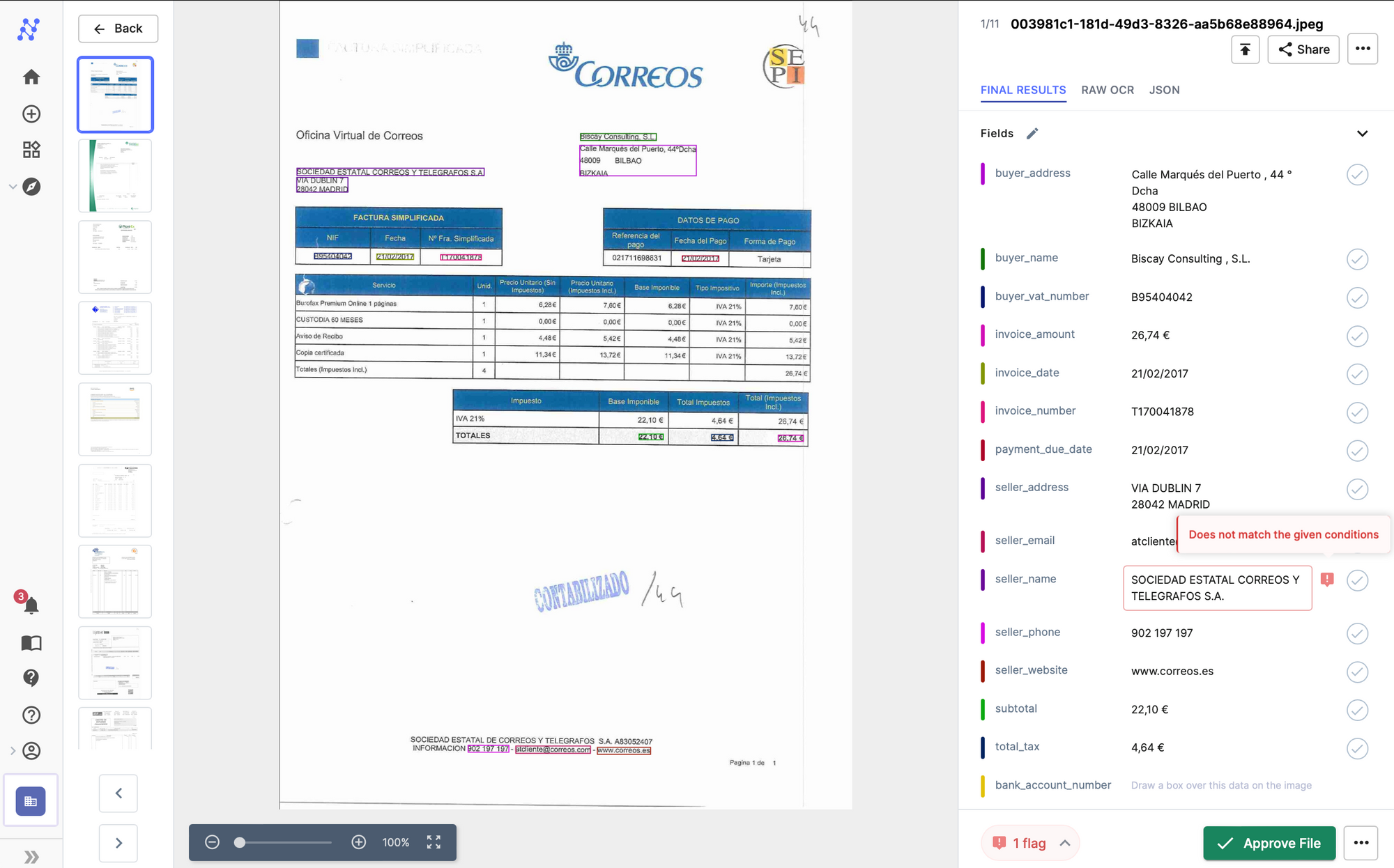
Nanonets processes files instantly and extracts structured data as fields, line items and tables.
- Set up Approval and Validation Rules
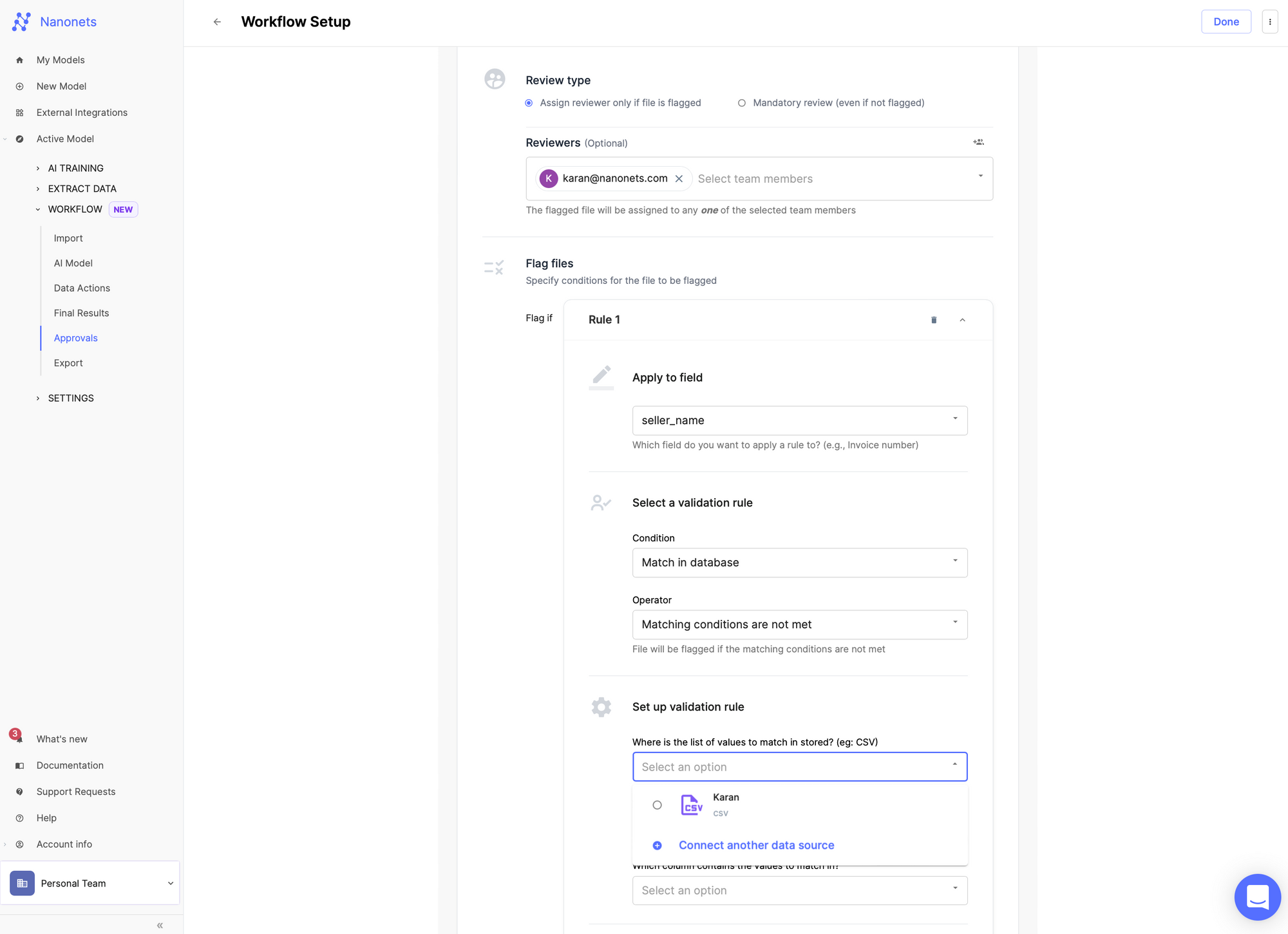
You can set up a manual / automated approval process based on conditions rules, and also set up validation rules based on the extracted data.
- Set up export options
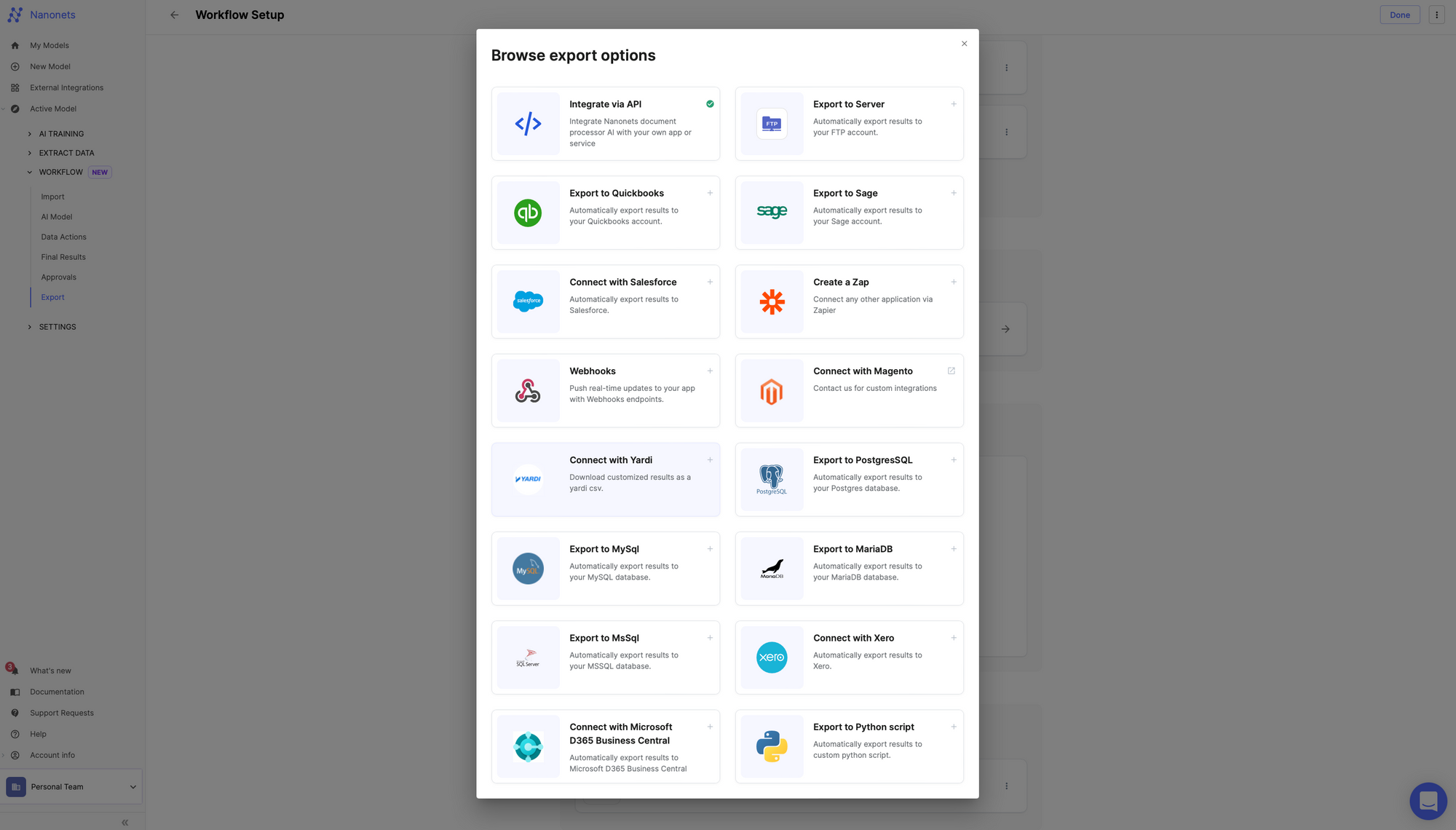
You can download the data in format of choice, or simply export the data using our easy to use readymade integrations. We provide ready to use integrations with ERPs / software / database of your choice.
As businesses strive to streamline their operations and improve productivity, form automation has become an increasingly essential tool. By automating repetitive, time-consuming tasks like data entry, businesses can save valuable time and resources, reduce errors, and improve overall efficiency.
Form automation involves using software to digitize and automate the process of filling out and processing forms. This can include everything from employee onboarding forms to customer intake forms, invoices, and more. With form automation, businesses can eliminate the need for manual data entry, reduce the risk of errors, and speed up the processing of important documents.
Nanonets is a powerful form automation platform that can help businesses of all sizes streamline their operations and improve efficiency. With its advanced AI-powered technology, Nanonets makes it easy to automate even the most complex forms and processes, reducing the burden on employees and freeing up time for more important tasks.
One of the key benefits of using Nanonets for form automation is its ability to integrate with a wide range of business applications and software platforms. This means that businesses can easily integrate form automation into their existing workflows, without the need for costly and time-consuming manual integration processes.
Another key advantage of Nanonets is its ease of use. With its intuitive user interface and powerful drag-and-drop form builder, even non-technical users can quickly and easily create and automate complex forms. And with its advanced AI algorithms, Nanonets can accurately extract and process data from even the messiest and most unstructured forms, reducing the risk of errors and improving overall efficiency.
In addition to its advanced form automation capabilities, Nanonets also offers a range of other powerful features and tools to help businesses optimize their operations and improve productivity. These include data visualization tools, custom reporting capabilities, and more, all designed to help businesses make data-driven decisions and improve overall performance.
Overall, form automation is quickly becoming an essential tool for businesses of all sizes, as they strive to streamline their operations and improve productivity. And with its powerful AI-powered platform and intuitive user interface, Nanonets is an ideal solution for businesses looking to automate their form processes and improve efficiency. Whether you're a small business owner looking to save time and resources, or a large enterprise seeking to optimize your operations, Nanonets has the tools and features you need to succeed in today's fast-paced business world.

